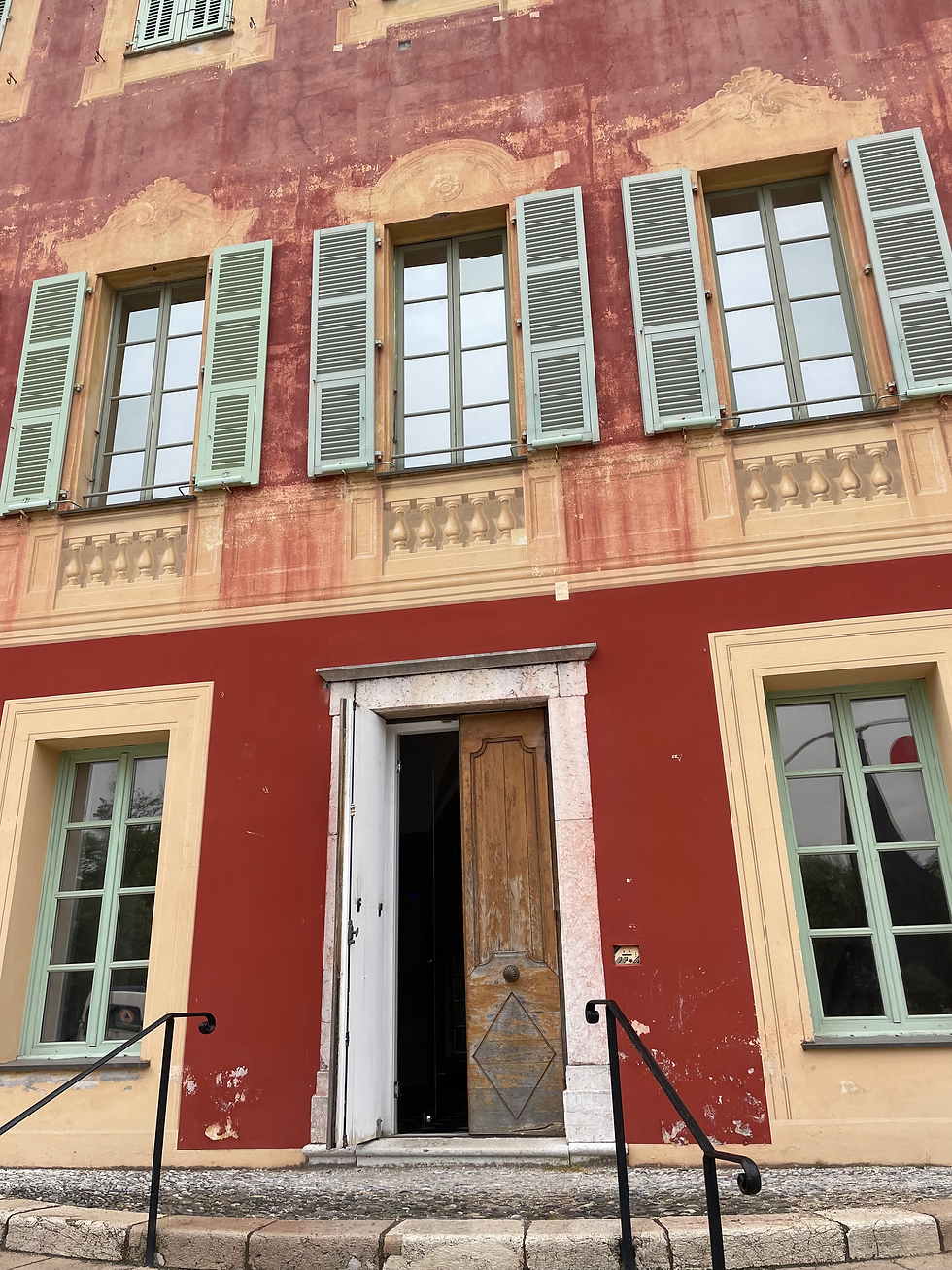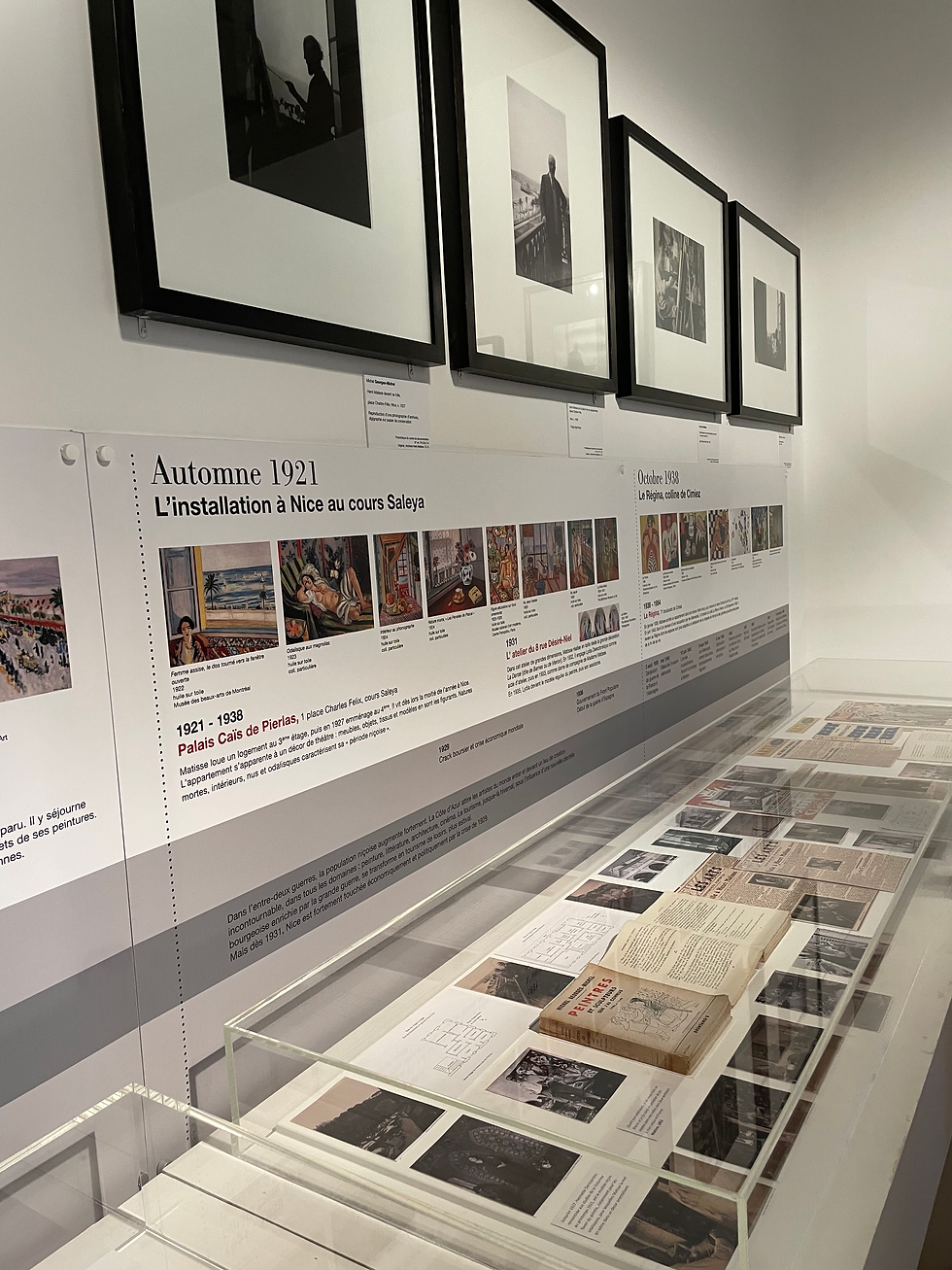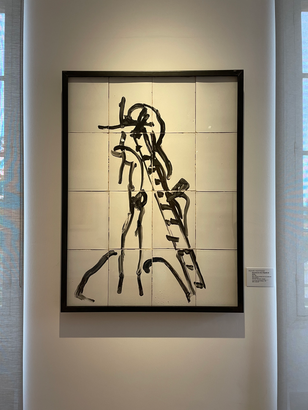A Nice place to visit: Musée Matisse
- kcaranante
- May 11, 2022
- 4 min read
Nestled in the historic neighborhood of Cimiez of Nice, France, the Musée Matisse can be found inside of a refurbished villa from the 1700s.

The Villa
In the 1600s, on the Gubernatis family estate, stood a modest country house that was occupied by sharecroppers. The house was built in the remains of the Roman city of Cemenelum and surrounded by olive groves, crops, vineyards and pastures.
Jean-Baptiste, the first consul of Nice in 1618 and 1629, was the head of the Gubernatis family. One of his heirs decided to build a mansion on this historic site where the sharecroppers had settled. The mansion was named “Palais de Gubernatis.”
The Villa was completed in 1695 in the typical Genovese style. It doted a colorful façade with trompe l’oeil decorations. The inside featured an impressive groin vaulted hall.
Urbanization of Nice in the 1900s began to threaten the existence of the estate. It was sold to a real estate company in 1923 for development. However, the City of Nice wanted the Villa preserved so they acquired it in 1950 and renamed it “Villa des Arènes.”
“It would have been a great loss if the city did not save this building,” Louise Bodin said. “There is so much history to it. It really captures the essence of the town and shows how it was back then when Matisse would have been living and working here.”

The Museum
The Musée Matisse was made possible by donations from Matisse and his heirs. Matisse had a deep attachment to the city of Nice and he produced the largest part of his work there.
The Musée Matisse was inaugurated on January 5, 1963. The works were shown on the first floor of the Villa, and the ground floor was occupied by the Archaeological Museum.
In 1978, Jean Matisse made a donation that was used by the City of Nice to refurbish the museum and really highlight the works. The Archaeological Museum was relocated to a neighboring site, which allowed for the Musée Matisse to occupy the entire Villa.
The museum was once again refurbished in 1987 when Jean-François Bodin was chosen to build a new wing. The renovated and enlarged museum was completed in 1993.
“His work being housed in this historic villa really adds to the experience,” Emilie Beaumont said. “It helps you understand why Matisse was so drawn to Nice and how it inspired so much of his work.”

Henri Matisse and Nice
Matisse was born in a small town in northern France where his family worked in the grain business. Working as a legal clerk, Matisse began taking art classes before work.
He moved to Paris in 1891 for art training.
He began showing his work in large exhibition groups in the mid 1890s. By the turn of the century, he took a more progressive style and began experimenting with the Pointillism style. This style uses small dots instead of full brush strokes.
He had his first one-man exhibition in 1904 at the gallery of Ambroise Vollard.
Early work
In 1905 Matisse had a creative breakthrough after a visit to Saint-Tropez. He began painting in Fauvism style. This style emphasized the emotional power of sinuous lines, strong brushwork and bright colors. These works were not meant to just depict the world, they sought to capture the mood.
Matisse also made sculptures and drawings that were related to his paintings in the fact that they were always repeating and simplifying the forms to find their essence.
“His sculptures were really interesting to me,” Erin Partlow said. “I have learned a lot about Matisse’s paintings, but I never learned about his sculptures. I love how the museum showcases all the mediums he worked with.”
Matisse first visited Nice in 1917. It was there that he produced most of his work and spent much of his life. He lived there until his death in 1954. Nice is reflected in much of Matisse's work as he developed a great appreciation for the beauty of the town. The places that he lived in greatly influenced his work and helped define the stages of his work.
His work in the 1910s and 1920s continued to delight his viewers. His signature elements of saturated color, flattened pictorial space and strong lines carried on throughout his work.
Later work
In 1941, Matisse became bedridden after surgery, but he continued to work from a bed in his studio in Nice. His later work was just a exciting as his early work as he began working with cutouts. His most notable being his series of expressively shaped human figures cut from vibrant blue paper.
For his final, great achievement, Matisse created an entire program of decorations for the Chapel of the Rosary in Vence, a small town near Nice. He spent four years designing stain glass windows, murals and even vestments for the priests. Matisse considered this work his masterpiece.
Walking through his life

The museum is set up in chronological order as you ascend all three floors. You begin with his early work, then move through the different stages, ending his work from the Chapel of the Rosary.
There is also a timeline that highlights all the major events in the life of Matisse, including his marriages and children. You will find the museum much more interesting once you have read about his travels and experiences, as they were the basis for much of his work.
“This museum was curated very well,” Beaumont said. “The layout makes it easy for the visitor to get a sense of the timeline of Matisse’s life. It is also nice how the distinct stages of his work are all in different rooms so you can see how his work changed.”
Exhibitions to see
A Colour Library
(April 4, 2022 to May 15, 2022)
The Musée Matisse re-installed the Fleurs et fruits into a specifically designed display case following restoration. The new display shows this major work of Matisse’s later career in its full glory and showcases its monumental size.
Matisse in the Nahmad Collection
(October 30, 2021 to December 31, 2022)
The Musée Matisse is currently showing 16 paintings from the David and Ezra Nahmad collection. These art dealers and collectors have built an impressive collection over the years. The paintings they lent to the museum were painted in Nice or in Vence. They are shown with the museum’s permanent collection to give a wide range of Matisse’s work.





















Comments